05
The Fishes
Richard Beamish
How to List the Fish That Live in the Strait
Producing a List of Fishes Living in the Strait
Table 1. Fishes that were reported to be in the Strait of Georgia
Table 2. List of fishes currently in the Strait of Georgia but were not reported
Table 3. List of fishes in the Strait of Georgia not on the Puget Sound list
Table 4. Fishes in the Strait of Georgia seen in tanks at the Vancouver Aquarium in 2011
Grouping Fish according to Taxonomic Order
Fishes of the Strait
- Table 5. Families (53) and species (223) of fishes found in the Strait of Georgia
- Table 6. The 30 most abundant species found in the Strait of Georgia
Almost all of the fish species that are present in the Strait of Georgia today were most likely here several hundred, if not thousands, of years ago, and at that time the strait’s ecosystem would have been in balance with both climate and ocean conditions. We know that the species dominating the strait in those long-ago years were large predatory fish, lingcod being one of the top predators along with Chinook salmon and rockfish. Smaller fishes, such as Pacific herring, were also abundant. Since then, abundances and the population structure of the various species may have changed substantially. One hundred years ago there were large quantities of Pacific cod, sufficient to support the developing British Columbia groundfish fishery. Pacific spiny dogfish were so abundant in 1947 that the commercial catch for them in the strait and throughout BC waters was the largest of any species in Canada. As commercial and recreational fishing developed in the 1940s through to the 1970s, the top predators were heavily fished, making room in the ecosystem for Pacific hake and some smaller pelagic species such as the very abundant northern smoothtongue, which is rarely seen by the public. Although many of the later changes in the strait’s species composition resulted from the intensity of fishing, some of the most recent changes occurred because of oceanographic and climate influences, which have altered the balance between competitors and predators.
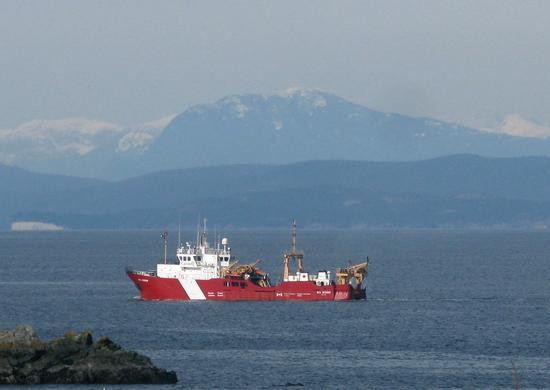
In every ecosystem, each species evolves to optimize survival and to increase population size, and they all have the potential to rapidly increase in abundance. Most fish species evolved to maximize their abundance by producing large numbers of eggs because only an extremely small percentage of these eggs ever become adults. However, there are other controls within the ecosystem that may limit population size. Pacific hake, for example, grew more slowly in size as they became more abundant between the late 1980s and the 1990s because more fish meant less food available for each fish. The females, being smaller than before, were able to mature only a fraction of the eggs in their ovaries, which reduced the number of larval fish. In general the survival of each species is related to the amount of food available when the larvae first start feeding, as the individuals that grow faster and quicker are the ones that have a better chance to survive. However, as these larval fish become more abundant, their density increases, which in turn boosts competition for food. Less food intake slows growth and this decreases chances of survival, reducing population numbers. Thus, when food supply is the limiting factor, a population increase occurs whenever the density of juveniles is low, while a population decrease occurs when the density of juveniles is high.
Some fish, such as various species of rockfish and sablefish, are long-lived, enabling their species to survive extended periods of poor feeding conditions in their preferred ocean habitat. Others, such as Pacific salmon, optimize their survival by having different populations entering the strait from their natal streams at different times of the spring and summer, thus assuring that some fish will enter the ocean when large abundances of plankton are available. This diversity in salmon life histories both in fresh water and in the ocean helps to guarantee that some individuals in the population will always survive. Consequently, it is almost unheard of for Pacific salmon to have complete brood-year failures, although for certain long-lived species complete failures of a spawning year class do occur.

While all the fish species in the Strait of Georgia share a common need to find food, avoid predation, grow quickly and reproduce, each species carries out these functions more or less successfully by becoming highly adapted to a particular habitat. From time to time, however, habitat changes have occurred that reduced the food supply of one species while favouring species with slightly different feeding abilities. This means that all the fish in the strait today are survivors, though the limits to their resilience are as yet unknown and mostly unstudied.
In addition to surviving the natural changes in their habitat, fishes in the strait now need to survive human impacts such as fishing, pollution and climate change. For example, the annual average temperature of the water is about 1°C warmer, top to bottom, than it was in the early 1970s. Surface temperatures are about 2.5°C warmer in the summer, and the expectations are that the overall warming will continue, although there has been a cooling trend in recent years. This change has a big impact on fish because they are cold-blooded and their body temperature is the same as the outside surroundings. As water temperatures climb and their bodies warm, they need more energy for physiological functions such as breathing and muscle activity, and this reduces the energy available for rapid growth, which is so important for survival in the early stages of their development. Thus, the warming of the strait—and perhaps its increasing acidification—will change the habitats and further stress populations that may already be stressed from fishing activities. To improve management of fisheries in the strait, all of these changes need to be monitored and carefully studied, but this kind of research is both complex and expensive.
Ideally, the management of each fishery is based on a thorough knowledge of the biology of the species, but during the early fisheries this kind of biological understanding was pretty basic. An example of our limited understanding in those years was our inability to determine the age of some of the key species, and knowing correct ages is important because biologists want to ensure that fish are allowed to spawn before they are killed by a fishery. It was not until the late 1970s that we were able to age lingcod accurately, and it was not until the mid-1980s that we discovered that rockfish and some other species were substantially older than had been thought. Although a long-lived species can only survive a low rate of fishing, it took another 20 years before action was taken to protect them from an excessive rate of fishing. Unfortunately, fishing theory still has not found a way to selectively manage a fishery so that it protects the older individuals. Achieving this goal is important because a rockfish, for example, that is 50 years old has a greater ability to increase the species population than a very young adult does since the older adult produces more eggs and larger larvae, increasing the odds of survival.
A focus on the management of a single species is, however, more a management of convenience than of responsibility because fishing down the abundance of one species most certainly alters relationships within the whole ecosystem. It has been our lack of knowledge of these relationships that has allowed us to believe that management at a single species level can be sustainable. Today there is a growing emphasis on ecosystem management, however, there is currently no known way to apply it. I think that ecosystem-based management is an opportunity to communicate with British Columbians about what we know, do not know and need to know to manage our fisheries. Still, management problems do not mean that fishing is unacceptable. Fish should be an essential part of the human diet, and sport fishing is fun; therefore, fishing requires a commitment to continue improving our understanding of the relationships among species. We want fishing to be sustainable by harvesting the number of fish that are naturally replaced by the dynamics of the population, ensuring future generations the opportunity to catch and eat fish.
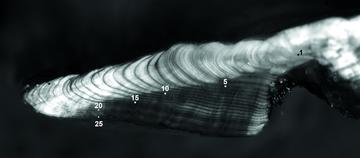
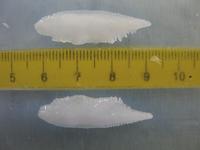
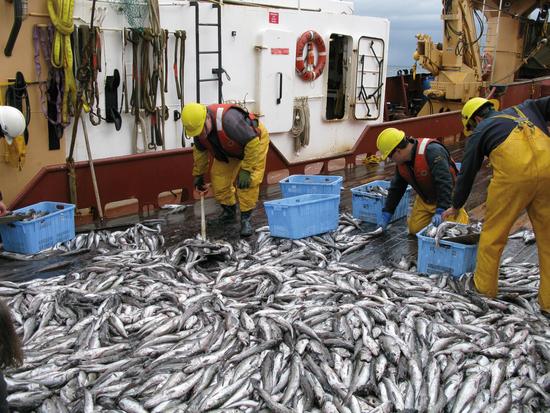
[To Top]
How to List the Fish That Live in the Strait
Biologists divide the food web or food chain into six feeding or trophic levels because the categorization of feeding levels helps to demonstrate the complexity of the dependency of a particular species on the ocean environment or ecosystem. Phytoplankton and macroalgae, which survive by using chlorophyll plus sunlight to make their own food, are at the base of the food chain at level 1. Organisms in level 2, like clams, feed on these primary producers. Forage fish such as Pacific herring are in level 3 where they eat zooplankton and other organisms that feed on the primary producers. Trophic level 4 is made up of large predatory fishes such as Pacific cod, coho and Chinook salmon that feed on forage fish. Trophic level 5 contains species such as lingcod that eat predatory fishes, and level 6 is the top of the food chain with examples such as transient killer whales and great white sharks. However, these trophic levels are mostly of academic interest.
In the lists presented in this chapter the fishes of the Strait of Georgia are listed in both taxonomic and alphabetical order. In taxonomic order the most ancient species are placed at the top of the list and the most recently evolved species appear at the end of the list. Some specific tables list the fishes in order of abundance to show the more common species, and some lists show fish by their preferred habitat. There are fish commonly found in the area between low and high tides (intertidal), fish that are found around seaweeds and giant kelp, and fish common to underwater reefs or areas with strong currents. Many fish prefer the softer bottoms, including the deepest areas of the strait, and there are fish that are most common in the water column, near the surface, in mid-water or deepwater.
The fishes listed in figure 1 are the most abundant species in the Strait of Georgia (also see lists at the end of the chapter). The drawings are taken from Pacific Fishes of Canada by J.L. Hart, with permission.
Figure 1. Abundant fishes of the Strait of Georgia.
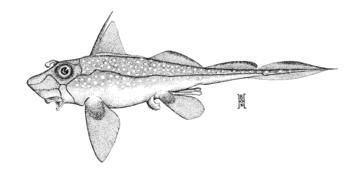
Spotted Ratfish
|
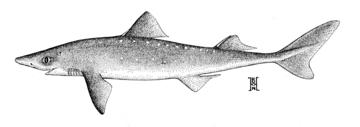
Pacific Spiny Dogfish
|
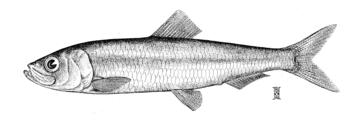
Pacific Herring
|

Northern Smoothtongue
|
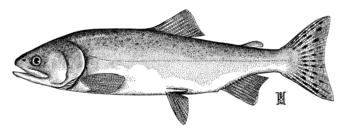
Pink Salmon
|
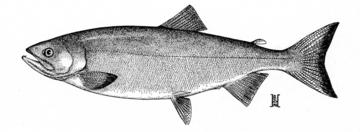
Chum Salmon
|
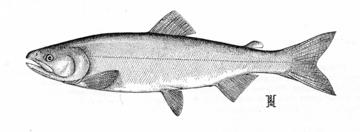
Sockeye Salmon
|
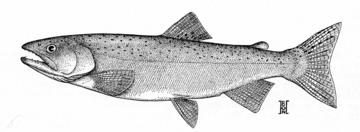
Coho Salmon
|
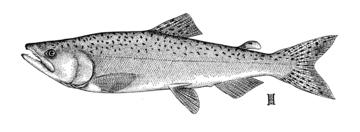
Chinook Salmon
|
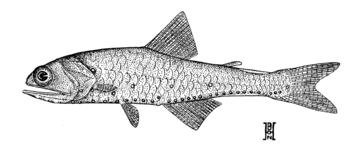
Northern Lampfish
|

Pacific Hake
|
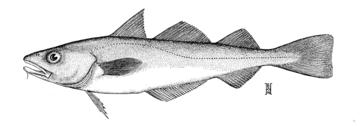
Pacific Tomcod
|
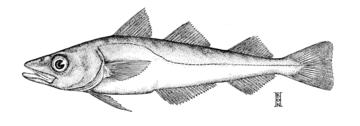
Walleye Pollock
|

Plainfin Midshipman
|
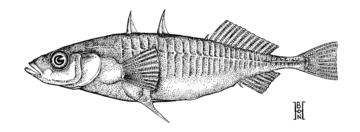
Threespine Stickleback
|
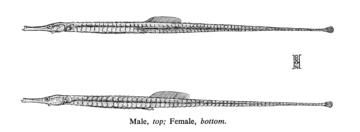
Bay Pipefish
|
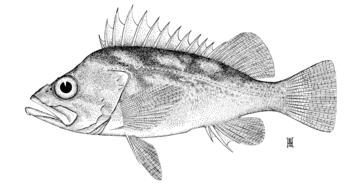
Copper Rockfish
|
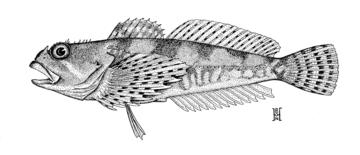
Tidepool Sculpin
|
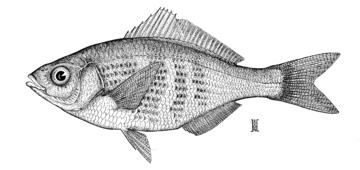
Shiner Perch
|
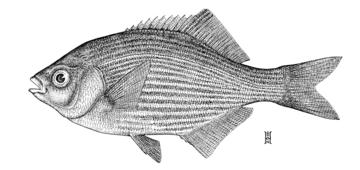
Striped Seaperch
|
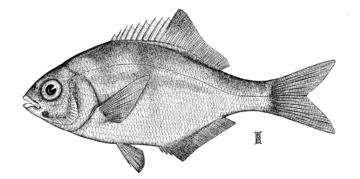
Pile Perch
|

Blackbelly Eelpout
|
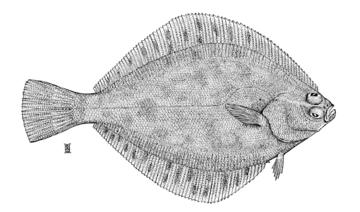
Southern Rock Sole
|
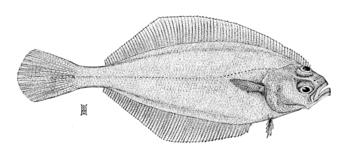
Slender Sole
|
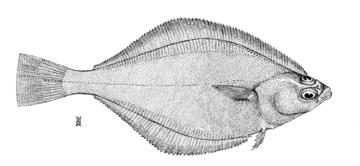
English Sole
|
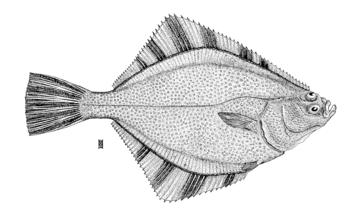
Starry Flounder
|
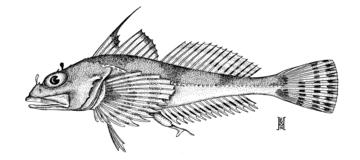
Roughback Sculpin
|
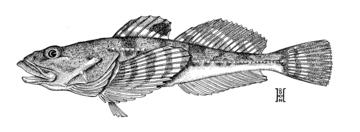
Pacific Staghorn Sculpin
|
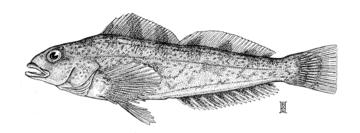
Kelp Greenling
|
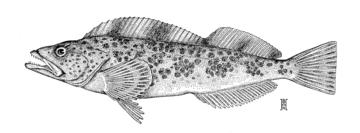
Lingcod
|
[To Top]
Producing a List of Fishes Living in the Strait
J.L. Hart’s book, Pacific Fishes of Canada, was one of the books used to compile a list of all the fishes in the Strait of Georgia (tables 23 and 24). Published in 1973, it recorded all the species reported to be in the strait to that date. Recent surveys and reports were then used to identify 223 fish currently in the strait. From these later studies I estimated that seven of the species in Hart’s book are no longer in the area (table 1), but I was able to include 33 fish that were not in his book (table 2).
Silvery hatchetfish and Pacific viperfish were found in the strait about 40 years ago, but none have been found recently despite literally thousands of hours of sampling. The hybrid sole is not listed as a species in this chapter, as it is generally considered to be a hybrid of English sole and the starry flounder and therefore not a distinct species. If it is eventually found to be a species, it will have the scientific name Isopsetta ischyra. As in Hart’s book, the giant wrymouth is listed as being in the strait, though no specimens were reported in any of the survey material used to write this chapter. It has, however, been reported in Puget Sound, but since it is rare there, it is possible that the giant wrymouth is no longer here.
Basking sharks, bigeye thresher and Pacific sleeper sharks are included in my list although they may only occasionally enter the strait. For example, a basking shark was sighted in July 2009 from San Juan Island, one nautical mile southwest of Salmon Banks, and Pacific sleeper sharks have been caught in commercial fisheries and research surveys in Johnstone Strait as recently as 2011. In July 2006, a 140-cm sevengill shark was caught near the surface in the Gulf Islands off Crofton. Salmon sharks were confirmed in the strait in the past, but there had been no records in the last two decades. Then in May 2013, a clear video taken with a cellphone showed a salmon shark swimming just 1.5 km off Shelter Point, south of Campbell River, providing evidence that these sharks do find their way into the strait.
A checklist of fishes in Puget Sound, published by the University of Washington in 1972, lists 181 species that are also on the list of fishes in the Strait of Georgia. There are 27 species on the Strait of Georgia list that are not on the Puget Sound list, and another 22 species that were on the Puget Sound list but not on the Strait of Georgia list. (See table 3.)
The relative abundance of each species is assessed using four categories—abundant, common, uncommon and rare—that are based on recent survey information and reports as well as on my discussions with colleagues. The list of species and the estimates of abundance emphasize the importance of having an agency such as the Fish Museum at the University of British Columbia, which accepts specimens and records of unusual species. With the changing climate, there will most likely be more changes in the species composition in the Strait of Georgia, and it would be very useful if there were a group of citizen scientists, similar to those who record bird species, to report unusual fish sightings to an organization that would receive and record the information.
The Vancouver Aquarium normally has a number of species in their tanks that occur in the strait, and in early 2011 there were 83 species occurring in the region that were in their aquaria. (See table 4.) Live fish, including some of the species found in the Strait of Georgia, are also found in other commercial aquaria around the province, including the Shaw Ocean Discovery Centre in Sidney and the Ucluelet Aquarium in Ucluelet, as well as the tanks in the International Terminal wing of the Vancouver International Airport. Other sources of useful information about the fishes in the Strait of Georgia are the books listed in the Chapter Notes at the end of this book and on the internet, a constantly updated source of information and appealing photographs.
Grouping Fish according to Taxonomic Order
The science of naming organisms is called systematics and the operational details are referred to as taxonomy. Taxonomists put closely related species in the same Genus or Family; more distantly related species can be in an Order; and most fish are in one Class. Most species in the Strait of Georgia were named centuries ago, but scientific names change as more becomes known about morphological structures or the DNA of a particular species. Scientific names allow scientists from different parts of the world to be clearly understood when they are talking or writing about the same animal, whereas the common name allows an informed public to discuss a particular fish in a more casual way. This chapter uses the most recently accepted scientific and common names.
Another thing about naming organisms that may wrongly appear to be straightforward is the definition of a species. This is not a simple matter and merits a book of its own. However, the definition of a species that I prefer—though it may sound a bit flippant—is an appropriate starting place: a species is what a recognized expert thinks it is. Each year new species of fish are found throughout the world, but it is most unusual to discover a new species in the marine waters around British Columbia. In recent years the rock sole found in Puget Sound—and most likely also in the Strait of Georgia—was separated into two distinct species with the common names northern rock sole Lepidopsetta polyxystra and the southern rock sole Lepidopsetta bilineata. The relative abundance or even the occurrence of the northern and southern rock sole in the strait remains to be determined. There are a few other species in the area that taxonomists are looking at, such as the sandpaper skate and the black-fin sculpin, the latter being a globular, bubble-like fish with a space beneath the skin filled with fluid. Hart recorded in Pacific Fishes of Canada that the blackfin sculpin Malacocottus kincaidi was present, but specimens can also be keyed to the darkfin sculpin Malacocottus zonurus, and some of the smaller specimens even appear to be the whitetail sculpin Malacocottus aleuticus; recent DNA results show that these fish may be young blackfin sculpins. It remains to be confirmed that both blackfin and darkfin sculpins occur in the Strait of Georgia, and until more is known, both are listed. Undoubtedly more names will change. The use of DNA to compare individuals will most likely add to the complexity before it can be used in combination with traditional morphological-based methods to simplify fish taxonomy. Of course, it is humans and not Mother Nature that came up with the concept of species.
The species in table 5 are listed in taxonomic order, which means that the most ancient species are listed first. There are 223 species in the Strait of Georgia (tables 23 and 24) with thirty considered to be abundant (table 6, figure 1). The occurrence of a species in the Strait of Georgia tells us something about the families and species and, as well, something about the strait itself. Knowing that a species is increasing or decreasing in abundance may indicate that there are some important changes occurring. However, the first essential steps are to be able to identify the species and to count them in some way. What we need is a permanent archive of specimens, but this would require government support. In the meantime, if existing organizations could have a common archive, it would be a good start.
Fishes of the Strait
In my estimation there are a total of 223 fish species in the Strait of Georgia and these species are classified in 53 families. (See table 5 and fig. 2) About 30 of these species can be considered to be abundant. (See table 6 and fig. 1.)
Table 5. Families (53) and species (223) of fishes found in the Strait of Georgia.
Table 6. The 30 most abundant species found in the Strait of Georgia.
Figure 2. Photographs of some fishes found in the Strait of Georgia.All photos by Bill Pennell except blackfin sculpin by Gregory Jensen and western river lamprey by Joy Wade
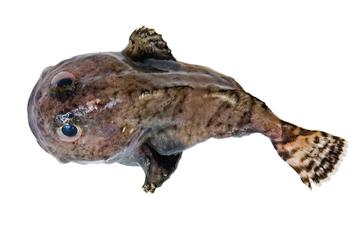
Blackfin Sculpin
|
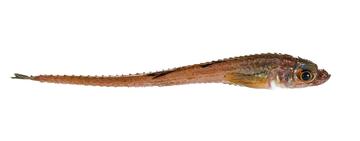
Blackfin Poacher
|
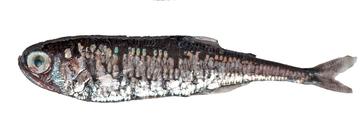
Blue Lanternfish
|
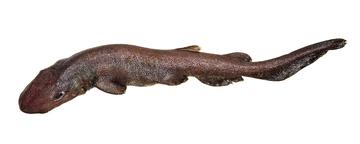
Brown Cat Shark
|
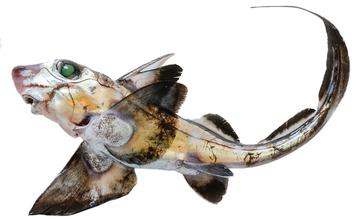
Spotted Ratfish
|
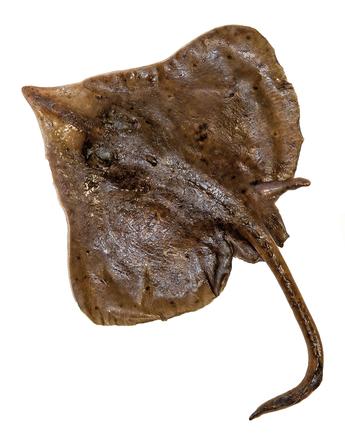
Longnose Skate
|
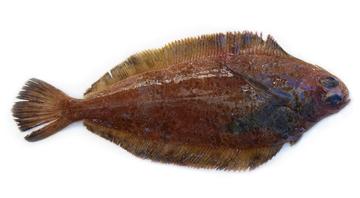
Dover Sole
|

Western River Lamprey
|
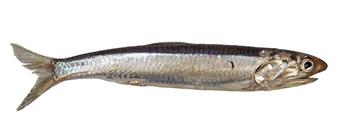
Northern Anchovy
|
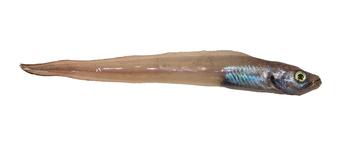
Pallid Eelpout
|
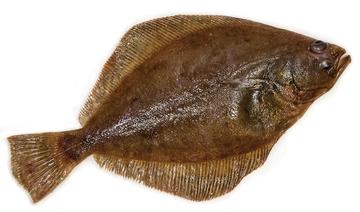
Petrale Sole
|
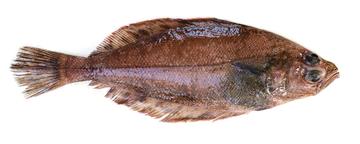
Slender Sole
|
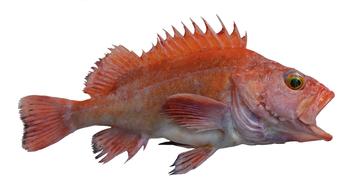
Yelloweye Rockfish
|
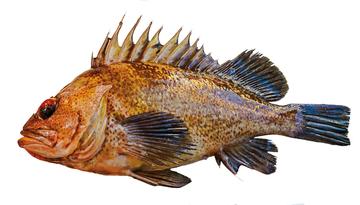
Quillback Rockfish
|
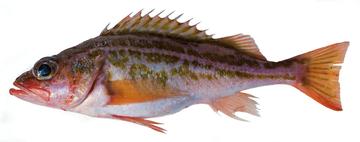
Greenstriped Rockfish
|
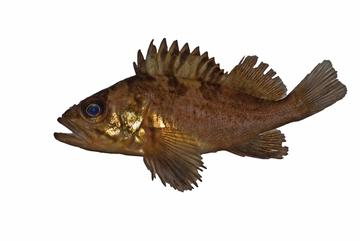
Copper Rockfish
|
[To Top] [To Contents]
[To 04. The Invertebrates and Marine Plants] [To 05. The Fishes Part 2]
